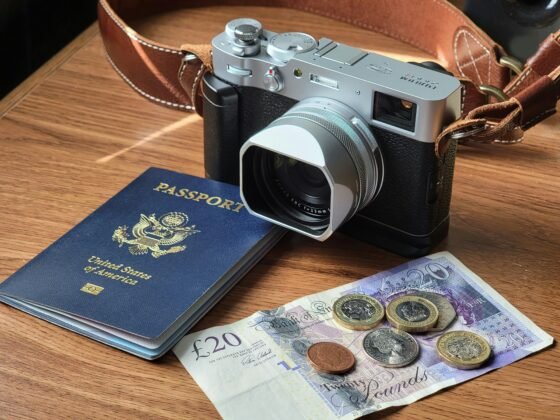Introduction
In the ever-evolving landscape of travel marketing, social media has emerged as a transformative force, reshaping how travelers plan, explore, and share their experiences. With the rise of platforms like Instagram, Facebook, and Twitter, travelers now have unprecedented access to information, inspiration, and peer recommendations. This shift has prompted travel brands to rethink their marketing strategies, focusing on creating engaging content, fostering community interaction, and leveraging influencer partnerships. In this dynamic environment, building a successful travel social media marketing strategy requires a deep understanding of the audience, creative content development, and a commitment to staying updated with the latest trends.
Brief overview of the importance of social media marketing in the travel industry.
Social media marketing has become indispensable in the travel industry, revolutionizing how businesses connect with travelers. Platforms like Instagram and Facebook provide a powerful channel for showcasing destinations, engaging audiences, and influencing travel decisions. In today’s digital age, a strategic social media presence is essential for success in the travel sector.
Mention the rise of experiential travel and how social media plays a role.
As experiential travel gains momentum, social media emerges as a pivotal tool in shaping travelers’ journeys. With a shift towards immersive and authentic experiences, platforms like Instagram and Facebook offer travelers a window into destinations through user-generated content and influencer endorsements. This dynamic interaction not only influences travel decisions but also fosters a sense of community and connection among like-minded explorers. In the age of experiential travel, social media serves as a catalyst for inspiration and exploration.
1.Know Your Audience
Understanding your audience is paramount in crafting a successful social media marketing strategy for travel. By knowing their preferences, interests, and behavior patterns, businesses can tailor their content to resonate with their target demographic. Whether it’s adventure seekers craving adrenaline-fueled escapades or luxury travelers seeking indulgent experiences, catering to specific audience segments ensures relevance and engagement. Through data analytics, market research, and audience insights, travel brands can effectively connect with their audience, foster meaningful interactions, and ultimately drive conversions in the competitive landscape of the travel industry.
Identifying the target demographic.
Identifying the target demographic is a crucial step in developing a successful social media marketing strategy for travel businesses. By pinpointing the characteristics, preferences, and behaviors of their ideal customers, brands can tailor their content and messaging to resonate with their audience. Whether it’s millennials seeking adventure, families looking for kid-friendly destinations, or retirees seeking relaxation, understanding the demographics allows businesses to create compelling campaigns that speak directly to their target market. Through market research, data analysis, and audience segmentation, travel brands can effectively reach and engage their desired demographic, driving awareness, loyalty, and ultimately, bookings.
Understanding audience preferences and behaviors.
Understanding audience preferences and behaviors is essential for crafting a successful social media strategy in the travel industry. By analyzing data and insights, businesses can tailor their content to resonate with their target demographic, ensuring relevance and engagement. This understanding enables brands to create compelling campaigns that drive results and foster connections with their audience.
2.Engage with Visual Storytelling
Engaging with visual storytelling is a powerful technique in travel social media marketing. By leveraging captivating images, videos, and graphics, brands can convey the unique experiences and attractions of destinations to their audience. Visual content resonates deeply with viewers, evoking emotions and inspiring wanderlust. Whether it’s showcasing breathtaking landscapes, immersive cultural experiences, or thrilling adventures, compelling visuals have the ability to transport viewers and ignite their desire to explore. By incorporating visual storytelling into their social media strategy, travel brands can effectively captivate their audience, drive engagement, and ultimately influence travel decisions.
The power of visuals in travel marketing.
Visuals are paramount in travel marketing, wielding unparalleled influence in capturing attention and inspiring wanderlust. Stunning imagery, immersive videos, and captivating graphics transport viewers to destinations, evoking emotions and igniting a desire to explore. In a highly competitive landscape, compelling visuals differentiate brands, conveying the essence of destinations and experiences to audiences worldwide. Whether showcasing pristine beaches, bustling cityscapes, or cultural landmarks, the power of visuals lies in their ability to evoke curiosity and aspiration. By harnessing the visual allure of travel, marketers can effectively engage audiences, drive engagement, and ultimately inspire travel bookings.
Tips for creating engaging photo and video content.
Creating engaging photo and video content for travel marketing requires attention to detail and creativity. Start by highlighting the unique features and experiences of destinations through high-quality visuals. Incorporate storytelling elements to evoke emotions and capture viewers’ imaginations. Showcasing diverse perspectives, behind-the-scenes moments, and authentic interactions can add depth to content. Additionally, ensure consistency in branding and aesthetics across all visuals to reinforce brand identity. By following these tips, travel brands can create compelling content that resonates with their audience and drives engagement..
3.Leverage User-Generated Content
Leveraging user-generated content (UGC) is a powerful strategy in travel marketing. By encouraging travelers to share their experiences through photos, videos, and reviews, brands can showcase authentic perspectives and foster a sense of community. UGC adds credibility and relatability to marketing campaigns, as potential travelers trust recommendations from fellow explorers. Additionally, sharing UGC demonstrates appreciation for customers and encourages engagement with the brand. By incorporating UGC into their social media strategy, travel brands can amplify their reach, drive engagement, and inspire others to embark on their own adventures.
Encouraging travelers to share their experiences.
Encouraging travelers to share their experiences is key in travel marketing. By prompting customers to post photos, videos, and reviews on social media, brands can leverage user-generated content to showcase authentic perspectives and inspire others to explore destinations. This strategy fosters engagement and builds a loyal community of travelers.
How to curate and feature user-generated content effectively.
Curating and featuring user-generated content effectively involves identifying compelling posts, obtaining permission from creators, and showcasing them across social media platforms and marketing channels as Upbeat Youtube agency has explained.. By crediting contributors and engaging with their content, brands can foster a sense of community and authenticity while amplifying their reach and engagement.
4. Utilize Influencer Partnerships
Utilizing influencer partnerships is a strategic approach in travel marketing. By collaborating with influencers who align with their brand values and target audience, travel businesses can leverage their reach and credibility to promote destinations and experiences. This strategy can drive brand awareness, engagement, and ultimately, bookings.
The benefits of collaborating with travel influencers.
Collaborating with travel influencers offers numerous benefits for businesses in the travel industry. Influencers often have a loyal and engaged following who trust their recommendations, making them powerful advocates for destinations and experiences. Their authentic content can reach a wide audience, including potential travelers seeking inspiration and advice. Additionally, influencer partnerships can provide access to niche markets and segments, allowing brands to target specific demographics effectively. By leveraging influencer partnerships, travel businesses can enhance their brand visibility, credibility, and engagement, ultimately driving conversions and fostering long-term relationships with their audience.
How to choose the right influencers for your brand.
Choosing the right influencers for your brand involves thorough research and alignment with your target audience and brand values. Look for influencers whose content resonates with your audience and who have genuine engagement with their followers. Consider factors such as audience demographics, content quality, authenticity, and past collaborations. By selecting influencers who authentically represent your brand, you can maximize the impact of your influencer partnerships and drive meaningful results.
5. Optimize for Mobile Users
Optimizing for mobile users is crucial in travel marketing, as many travelers use smartphones for trip planning and booking. Ensure that your website, social media content, and booking platforms are mobile-friendly and load quickly on various devices. Simplify navigation, streamline booking processes, and prioritize visually appealing content to provide a seamless experience for mobile users, enhancing engagement and driving conversions.
Importance of mobile-friendly content.
Mobile-friendly content is essential in today’s digital landscape, especially in travel marketing. With the majority of travelers using smartphones for trip planning and research, ensuring that your content is optimized for mobile devices is paramount. Mobile-friendly content improves user experience, increases accessibility, and reduces bounce rates. It also enhances visibility on search engines, as mobile-friendly websites are prioritized in search results. By prioritizing mobile-friendly content, travel brands can effectively reach and engage their audience, driving conversions and bookings.
Best practices for creating content that resonates with mobile users.
When creating content for mobile users in travel marketing, prioritize simplicity, readability, and visual appeal. Use concise yet compelling language, incorporate eye-catching visuals, and ensure fast loading times. Optimize for mobile by using responsive design and clear calls-to-action that are easy to tap. Tailor content formats to mobile preferences, such as vertical videos and swipeable carousels. By following these best practices, travel brands can create engaging content that captivates mobile users and drives action.
6. Create Shareable Content

Creating shareable content is essential in travel marketing to expand reach and engage audiences. Craft content that resonates emotionally, educates, or entertains, prompting viewers to share with their networks. Incorporate stunning visuals, compelling storytelling, and unique perspectives to capture attention and evoke curiosity. Encourage sharing through calls-to-action and social sharing buttons, fostering virality and amplifying brand visibility across social platforms, ultimately driving brand awareness and attracting potential travelers.
Ideas for content that encourages sharing.
Content that encourages sharing in travel marketing can include user-generated photos and videos showcasing authentic experiences, interactive quizzes or polls about travel preferences, captivating destination guides with insider tips, and contests or challenges prompting audience participation. Additionally, behind-the-scenes glimpses of travel experiences, inspirational quotes overlaid on scenic images, and interactive maps highlighting must-visit attractions can also prompt engagement and sharing among audiences.
Using hashtags and location tags to increase visibility.
Utilizing hashtags and location tags strategically can significantly increase visibility and engagement in travel marketing. Incorporate relevant hashtags related to travel, destinations, and experiences to expand reach and attract targeted audiences. Additionally, adding location tags to posts allows users to discover content specific to their interests and locations. By leveraging hashtags and location tags effectively, travel brands can enhance their visibility on social media platforms and connect with potential travelers effectively.
7. Offer Exclusive Deals and Contests
Offering exclusive deals and contests is a powerful strategy in travel marketing to incentivize engagement and drive bookings. Provide special discounts, packages, or upgrades exclusively for social media followers to reward their loyalty and encourage conversions. Additionally, host contests or giveaways where participants can win prizes such as free stays or tours by sharing their travel experiences or engaging with branded content. These promotions not only boost engagement but also generate buzz and excitement around your brand.
Using social media for promotions and contests.
Social media promotions and contests are effective tools for engaging audiences and driving brand awareness in travel marketing. Offer exclusive discounts, giveaways, or sweepstakes to incentivize participation and encourage user-generated content. Leverage various social media platforms to host these promotions, utilizing engaging visuals, clear instructions, and compelling calls-to-action. By creating excitement and fostering interaction, promotions and contests can attract new followers, increase engagement, and ultimately drive bookings for travel businesses.
Strategies for creating offers that drive engagement and bookings.
To create offers that drive engagement and bookings in travel marketing, focus on providing value and exclusivity to your audience. Offer limited-time discounts, special packages, or unique experiences that appeal to travelers’ interests and preferences. Incorporate compelling visuals and persuasive messaging to capture attention and prompt action. Additionally, leverage urgency and scarcity by highlighting limited availability or inventory, encouraging audiences to act quickly to secure the offer, resulting in increased engagement and conversions.
8. Monitor and Adapt to Trends
Monitoring and adapting to trends is essential in travel marketing to stay relevant and competitive in the ever-evolving landscape. Keep a close eye on industry trends, consumer preferences, and emerging technologies to identify opportunities and potential shifts in the market. Analyze data and performance metrics to gauge the effectiveness of your strategies and campaigns, and be prepared to pivot or adjust your approach accordingly. By staying agile and responsive to changes, travel brands can capitalize on new opportunities, better meet the needs of their audience, and maintain a competitive edge in the dynamic travel industry.
Keeping up with the latest social media trends.
Keeping up with the latest social media trends is crucial in travel marketing to maintain relevance and effectiveness in reaching target audiences. Regularly monitor platform updates, algorithm changes, and emerging features to adapt your strategies accordingly. Stay informed about popular content formats, viral challenges, and trending hashtags to capitalize on opportunities for engagement and visibility. By staying abreast of social media trends, travel brands can stay ahead of the curve and maximize their impact on digital platforms.
How to adapt your strategy to stay relevant.
Adapting your strategy to stay relevant in travel marketing involves continuously assessing market dynamics, consumer behavior, and industry trends. Analyze data, gather insights, and solicit feedback to identify areas for improvement and opportunities for innovation. Be flexible and agile in adjusting your approach, whether it’s refining content strategies, optimizing targeting, or embracing new technologies. By remaining responsive to changes in the landscape, travel brands can ensure their strategies remain effective and resonate with their audience.
In conclusion, implementing a comprehensive social media marketing strategy is paramount for success in the travel industry. By leveraging engaging content, user-generated content, influencer partnerships, and exclusive offers, travel brands can effectively connect with their audience, drive engagement, and ultimately, increase bookings. It’s essential to stay updated on the latest trends, adapt strategies accordingly, and prioritize mobile-friendly content to remain competitive in the dynamic landscape of travel marketing. With strategic planning and continuous optimization, travel businesses can thrive in the digital era.
Image: Unsplash, John Schnobrich












